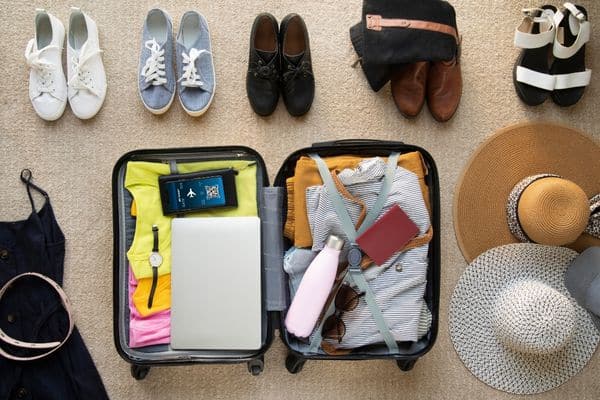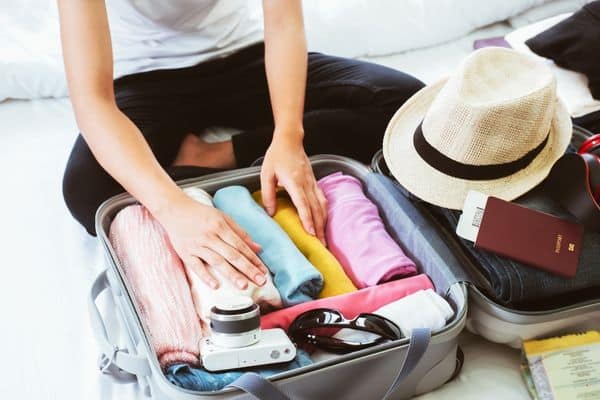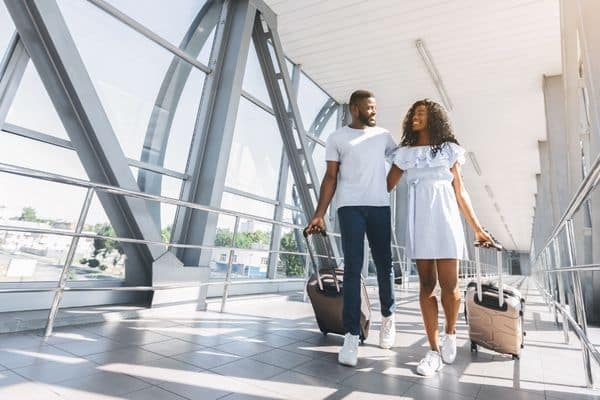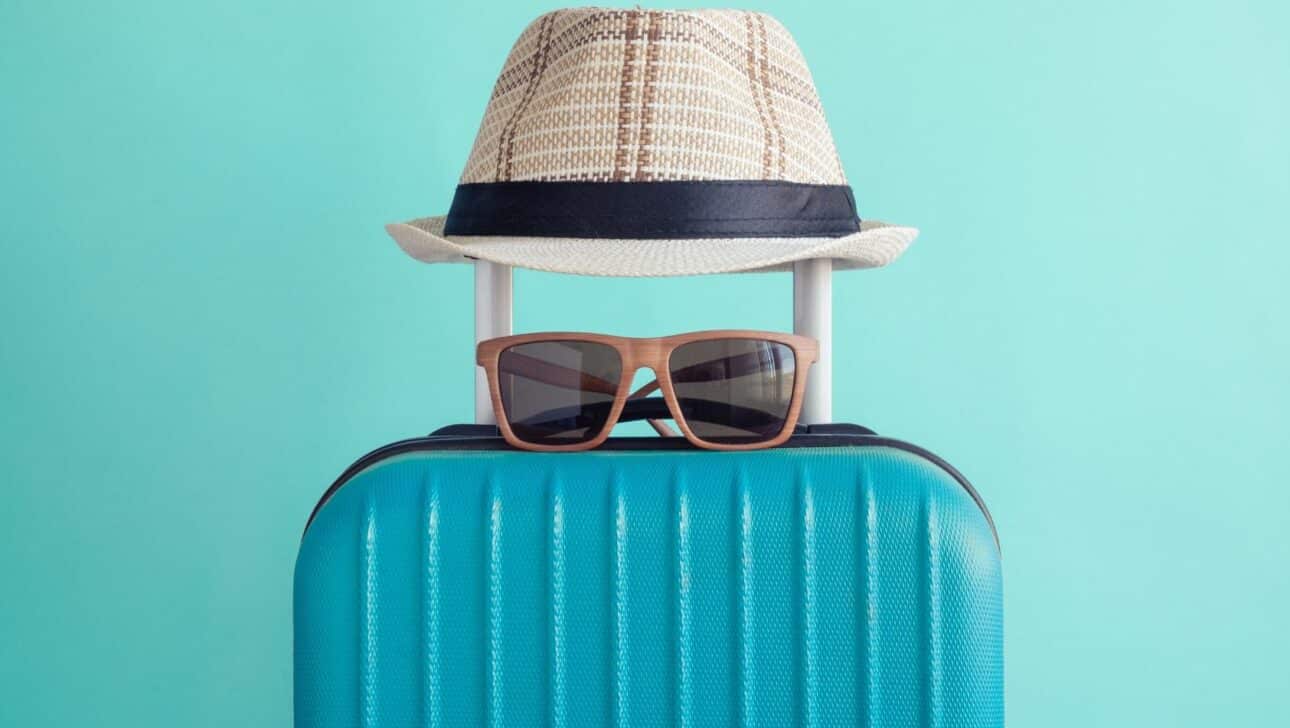We all want to travel light, but that goal usually goes flying out the window when it comes time to fill the suitcase. Two things tend to happen when we pack for a big trip: We bring more stuff than we actually need, and we don’t know how to pack the stuff we bring.
Classic Journeys founder Edward Piegza swears that he can go on just about any Classic Journeys trip using only carry-on luggage. This is a bold statement. And while we’re sure it’s true – after all, Ed logs thousands of travel miles every year – you don’t have to avoid checking a bag to be a more efficient traveler. Knowing how to pack a suitcase can make preparing for your next trip much easier, and can even help you have a more enjoyable time once you’re at your destination.
What Do You Really NEED To Pack For A Trip?

Before you even begin to layout your travel wardrobe, take a look at your itinerary. How many days will you be at your destination? And crucially, what will you be doing there? Your attire should obviously reflect the weather at your destination, and for that, it’s easy to check the weeklong forecast.
Your wardrobe should also be determined by your schedule – if you’re not going out for a fancy dinner, there’s no need to bring a fancy outfit. Thinking too much about what we might need sends us down the packing rabbit hole.
Seasoned travelers follow the 5-4-3-2-1 Rule for a weeklong trip: 5 pairs each of socks and underwear, 4 tops, 3 bottoms, 2 pairs of shoes, and a hat. If you’re going somewhere warm and you’ll be swimming, bring one swimsuit.
Here you can streamline things: Wear some of your bulkier items on the plane, like your walking/hiking shoes and jacket in case you get cold, to free up space in your suitcase.
Traveling light can also make the difference between checking a bag and having everything you’ll need in your carry-on luggage.
Choosing The Right Size Suitcase Matters
It seems counter-intuitive, but a bigger suitcase is rarely better. If you have a roomy suitcase, you tend to want to fill it – and if you’ve planned out what you’re going to do on your trip, you usually don’t need to.
A hard-shell 22-inch tall suitcase will absolutely suffice for a week-long trip – yes, that is the size of a carry-on. Hard suitcases are also easier to efficiently pack: soft suitcases or wheeled duffels are easier to overstuff, and the rigid shell of a hard suitcase offers substantially more protection than the soft sides of a duffel – important if you are planning on bringing back any fragile souvenirs.
Should You Roll Or Fold Clothes When Packing?

When you’re ready to pack your suitcase, you’ll want to approach the process with the goal of taking up as much usable space as possible.
Shoes will be the first to go in. Then you need to pack your clothes; you need to maximize the space, and so you’ll need to minimize the amount of room each item of clothing takes up. Doing so means folding or rolling – but is it better to fold or roll clothes in a suitcase?
Rolling Your Clothes
It depends. Rolling some items of clothing can help reduce wrinkles, which is why many travelers prefer this method. And rolling clothes tightly may be a more effective means of fitting more items into your suitcase. But some items, notably cotton button-down shirts or blouses, may still wrinkle and may form new creases.
Folding Your Clothes
If you opt to fold your clothes, you may want to consider purchasing a set of packing cubes. These are small, thin and lightweight containers that make it easier to organize your clothes, especially smaller items like socks, underwear and t-shirts, within your suitcase. They work especially well with hard carry-on bags.
Using Travel Compression Bags
Another way to reduce the space that your folded clothes take-up is by using compression bags. These are essentially large Ziploc bags – you simply place your folded clothes in them and press out the air before sealing.
Packing Other Essentials – Liquids, Toiletries, Gear, and Documents

The last items that should go into your suitcase are any essential liquids and toiletries. If you’re only bringing carry-ons, make sure you familiarize yourself with regulations regarding the size and number of liquid containers you can bring onboard. Remember too that the rules may vary from the country you’re leaving from to your destination.
Generally, liquids should be kept together in a clear bag that holds no more than a quart. You should pack this bag atop your clothing items, as you’ll be asked to remove it as you pass through the security checkpoint. If you put your toiletries in a checked bag, be sure to pack them the same way, and pack them last.
If airport security opts to inspect your luggage, the bag of toiletries will be right there on top, and the inspectors won’t need to dig through to find them. (Also, it’s nice to not have to dig through your suitcase for them yourself, after you’ve arrived at your hotel following a lengthy flight.)
Keep your passport, wallet, phone, camera, and any other electronics (don’t forget your charger and perhaps a converter) as well as other essential small items in your second, smaller carry-on.
Don’t Sweat The Small Stuff. Or Even The Big Stuff.

Many travelers intentionally leave “necessary” items at home, simply because those items can be found at their destination. This is especially true of items like shampoo, conditioner, and soap; leaving them at home and picking those items up at your destination frees up suitcase space.
It’s also fun to pick up bigger items that you might need for your trip when you get to your destination – for example, leaving one of your shirts at home and buying yourself an authentic guayabera shirt while in Havana, or not packing a jacket and instead using Classic Journey’s gear valet when you’re preparing to scale a glacier in Iceland. Think of this as souvenir shopping, but for things that you’ll actually use on your trip.
Of course, you’ll want to do some shopping while abroad – after all, this might be your only chance to explore the boutiques of Capri, or a Tokyo marketplace. Again, think strategically – the scarves you bought in Morocco should be easy to pack in your suitcase for the return trip, but the copper saucepan you purchased in Provence might pose a problem. Rather than attempt to stuff heavier or bulkier items into your luggage, set aside some money in your travel budget to ship them back home; you can use local postal services or private shipping companies such as DHL.
Making the most of your luggage space and keeping your clothing and travel items organized can make your trip much easier. You’ll worry less about what you’ve brought and where you’ve put it, and you can focus on enjoying your time at your destination. Bon voyage!
Ready to pack your bags for a Classic Journeys trip? Check out all of our trip destinations and reach out to a Travel Experience Specialist to secure your spot on tour.





